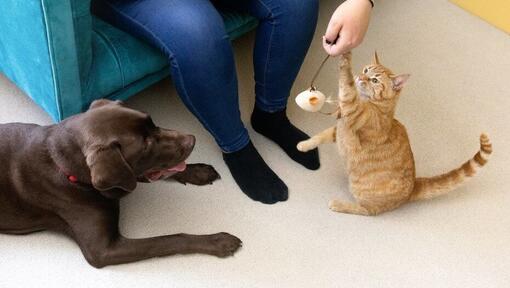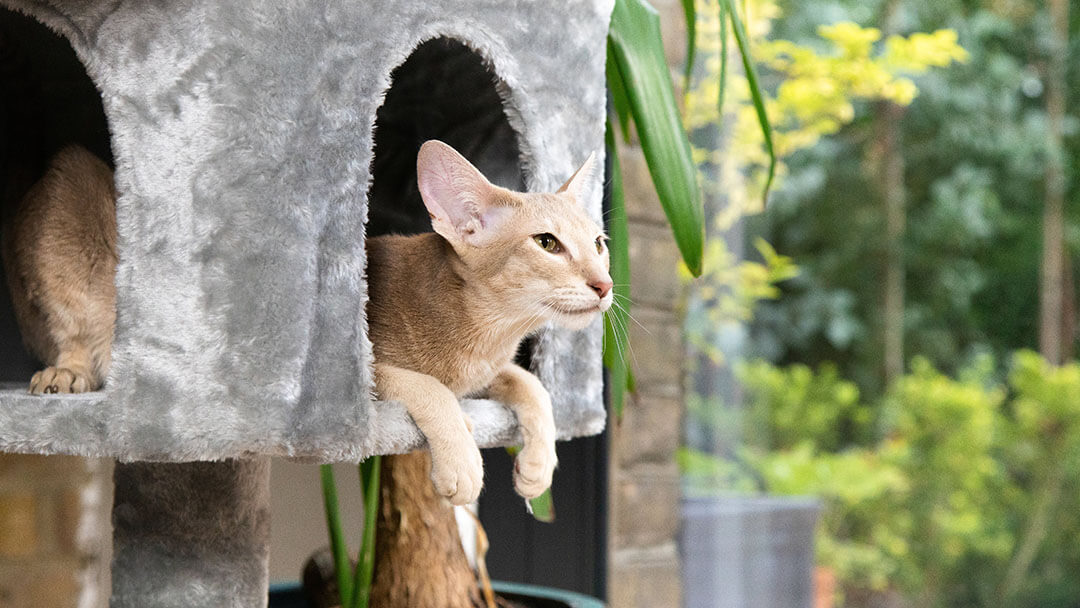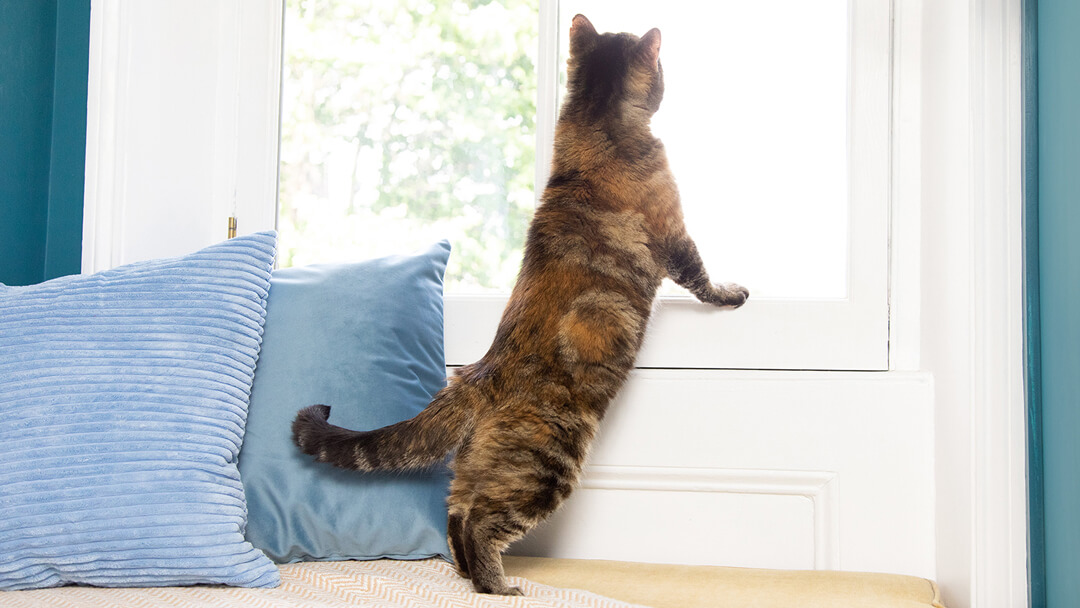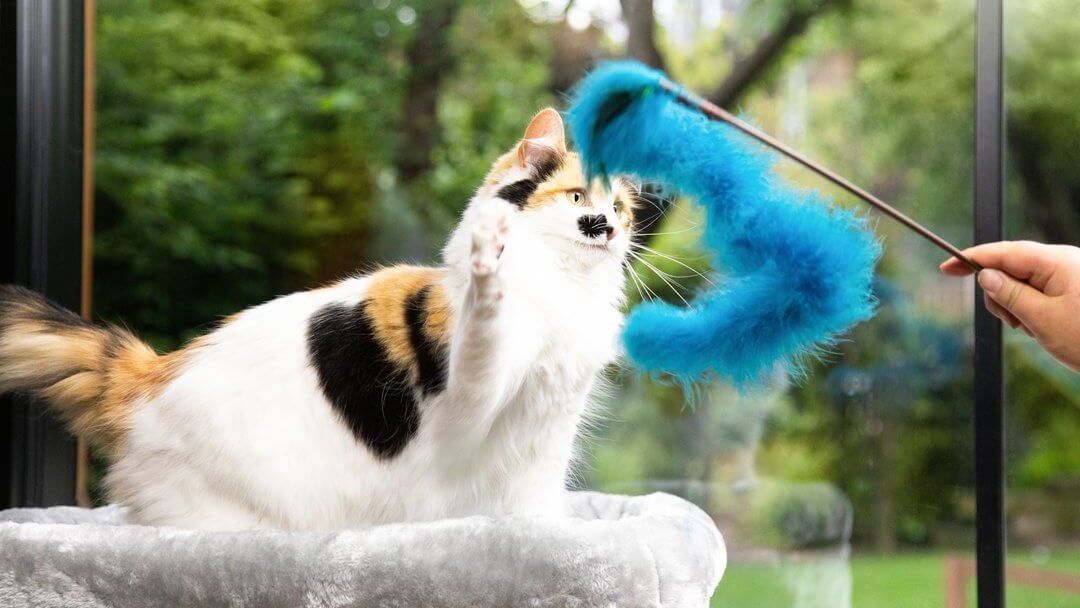

Cats are famously independent, which is one reason why they are so well suited as pets, especially for those who are best suited to furry friend who isn’t so needy.
This personality trait can have a flip side, as it can potentially make them a bit anti-social and unpredictable. So, if you’re introducing a new cat to your home and to other pets, be patient, understanding and approach with care – with a bit of time, everyone should get on just fine.
Bringing a kitten home
The good news is that adult cats tend to be much more welcoming to kittens or young cats than other adults. If both cats are neutered, better still (providing your vet advises that the kitten’s old enough to be neutered).
Before bringing a kitten home, or in the first few days of introducing a kitten to a cat, get your existing cat used to the smell of their new companion. Swap their bedding back and forth over the first week and, if either cat gets angry or distressed around the scent, try to offer calm reassurance by associating the new scent with a positive experience, such as a tasty treat.
While cats and dogs can be great friends, or live quite happily together even if they’re not, some pets should be kept away from cats. Small furry animals, like rabbits, guinea pigs, mice, rats, gerbils and chinchillas, as well as reptiles, must be protected at all times from cats.
Introducing a new cat to your cat
If you're bringing a second cat home where an adult cat already lives, follow these tips to make introductions safer and more successful for you all:
- Keep both cats apart to start with. Give your new cat a room of their own where they can settle in for a few days with their own food, warm bed, water bowls and a litter tray.
- While the new cat is settling in their room, start to introduce their scent to your existing cat. Let your cat smell your hands and clothing. Talk to them softly and stroke them reassuringly.
- Use one or two synthetic pheromone spray and plug-in diffusers around the house, especially in rooms where your cats are living, as these can help them relax and accept the presence of other cats.
- Once both cats appear comfortable with each other’s scent you can allow them to explore each other's territory, but still keep them apart.
- When you’re confident that they’re both relaxed in each other’s areas, you can start introducing your cat to a new cat. Keep one cat secure in a mesh pen or carrying basket and allow the other free rein to explore and sniff through the mesh for a few minutes. The secured cat will be safe and the basket will stop them from running away. The last thing you need at this point is a crazy cat chase! Expect there to be a certain amount of staring, hissing and ‘fluffing up’ body language as they get used to each other. It’s perfectly normal behaviour and it will pass, so try not to react. But if you think the introduction is too much too soon, and they’re trying to trade blows, separate them for a while before trying again.
- You’ll need to go through this exercise a few times in different rooms, alternating the ‘secure’ cat and the ‘free’ cat until they react to one another calmly.
- Don’t force the cats to be close to each other. Give them plenty of room and places to escape to if they just want a bit of peace and quiet.
If all goes well, your two cats should become great friends, playing with each other and washing and grooming together, but be patient. This sort of relationship can take time to develop and won’t happen the first time you introduce your new kitten to your cat.
If they seem genuinely uncomfortable in each other’s company, and there are no signs of improvement, separate them and ask your vet for more cat advice. They may recommend a feline behaviourist who can offer you specialist help.
There’s a useful two-week rule of thumb when trying to build a friendship between cats. If you’ve spent two weeks following the above advice but, despite your best efforts, you still end up with two feline personalities that simply don't mix, ask yourself whether the new cat would be happier in a home elsewhere. It may be kinder to both cats to consider re-homing your new cat with a family that can provide them with a warm welcome from every family member.
Introducing a new cat to your dog
Introducing a potentially nervous cat to an excitable dog must be handled carefully for the welfare of both pets. Follow our helpful tips for a hassle-free introduction.
Introducing a new cat to your puppy
The most important thing when introducing a new cat to your puppy is safety – the dog’s as well as the cat’s. An over-excited puppy can easily harm a kitten and a frightened cat can do a lot of damage with its claws. So take things slowly, concentrate on both pets’ needs and you can foster a wonderful friendship based on mutual respect.
Introducing a new cat or kitten to your adult dog
Even if your existing dog is used to cats – and is unlikely to raise so much as an eyebrow at a new cat or kitten - it’s still important to take great care with introductions.
- The priority, when introducing a new cat to your dog is to help both pets feel relaxed in each other’s company. Start by securing your new cat in a dog-proof indoor pen or cat basket and bring your dog in on lead.
- Reward your dog for being calm and, even if he barks repeatedly, stay calm yourself.
- Repeat the process in a variety of rooms, making sure each time that both the cat and the dog feel safe and secure.
- Once you’re confident that they’re calm and relaxed, allow the cat to walk out of her pen or basket but keep your dog on their lead.
- Stay calm – pets pick up on your stress – and allow them to begin investigating one another. Continue to reward good, calm behaviour. Repeat in as many rooms as possible.
- Supervise them until you know they’ll get along and only let your dog off the lead in the cat’s company once you’re sure he won’t react or try to chase her.
- Make sure your cat has somewhere high up to escape to if they feel uncomfortable, out of the dog’s reach.
- If you have more than one dog, always introduce your cat to one dog at a time.
- Make sure your dog doesn’t have access to your cat's litter box because, as scavengers, dogs are likely to consume the contents – not nice, but true!
- Separate cats and dogs at mealtimes so both can eat in comfort – you may wish to try feeding in separate rooms, or feeding your cat on an elevated surface that your dog cannot reach.
- Make sure your cat gets plenty of opportunity to chase, stalk and pounce on moving toys. Your dog is unlikely to want your cat to use their tail as a plaything.
The most important consideration when introducing a new cat to an existing cat or dog is safety. If your dog is persistently excitable or aggressive around the cat (or vice versa) speak to your vet and discuss a referral to a specialist pet behaviourist.














